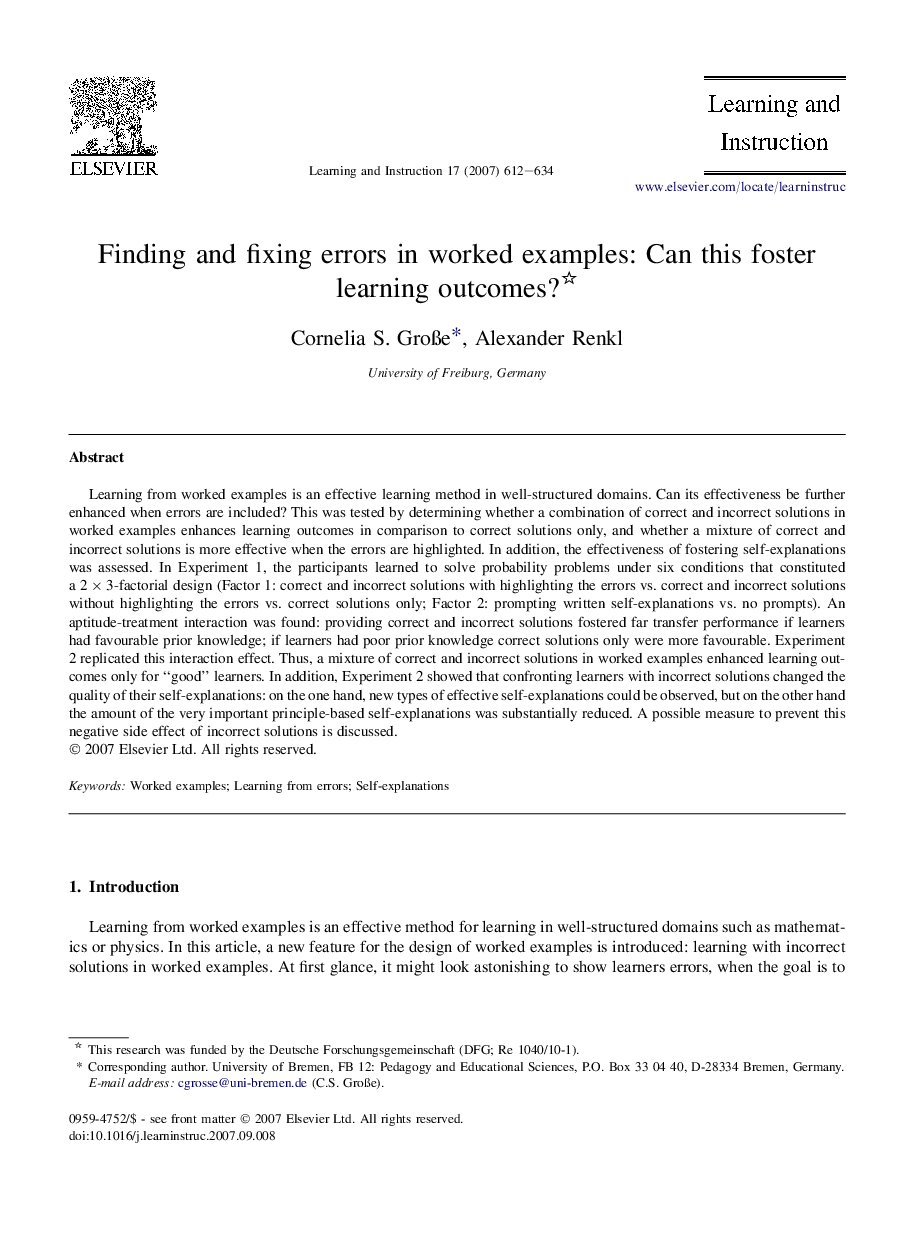| Article ID | Journal | Published Year | Pages | File Type |
|---|---|---|---|---|
| 366044 | Learning and Instruction | 2007 | 23 Pages |
Learning from worked examples is an effective learning method in well-structured domains. Can its effectiveness be further enhanced when errors are included? This was tested by determining whether a combination of correct and incorrect solutions in worked examples enhances learning outcomes in comparison to correct solutions only, and whether a mixture of correct and incorrect solutions is more effective when the errors are highlighted. In addition, the effectiveness of fostering self-explanations was assessed. In Experiment 1, the participants learned to solve probability problems under six conditions that constituted a 2 × 3-factorial design (Factor 1: correct and incorrect solutions with highlighting the errors vs. correct and incorrect solutions without highlighting the errors vs. correct solutions only; Factor 2: prompting written self-explanations vs. no prompts). An aptitude-treatment interaction was found: providing correct and incorrect solutions fostered far transfer performance if learners had favourable prior knowledge; if learners had poor prior knowledge correct solutions only were more favourable. Experiment 2 replicated this interaction effect. Thus, a mixture of correct and incorrect solutions in worked examples enhanced learning outcomes only for “good” learners. In addition, Experiment 2 showed that confronting learners with incorrect solutions changed the quality of their self-explanations: on the one hand, new types of effective self-explanations could be observed, but on the other hand the amount of the very important principle-based self-explanations was substantially reduced. A possible measure to prevent this negative side effect of incorrect solutions is discussed.
